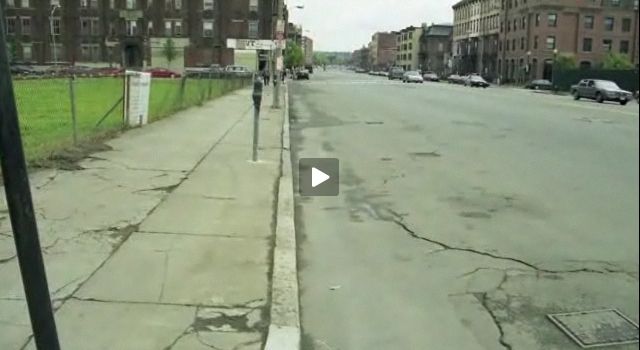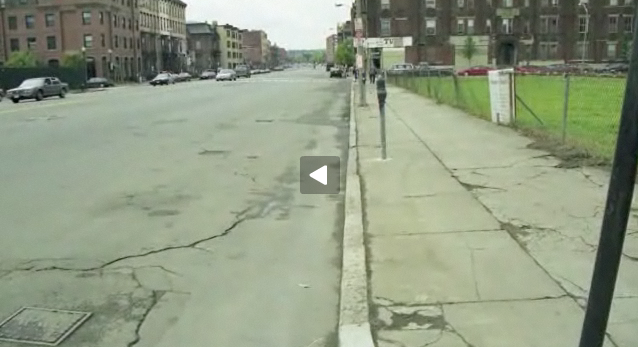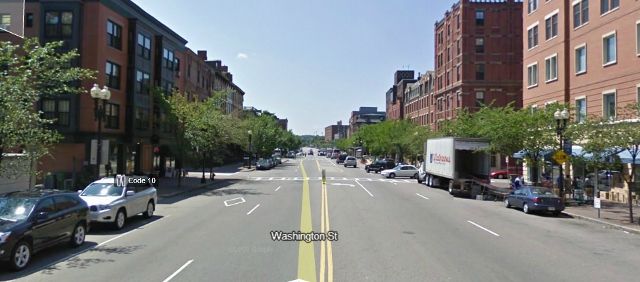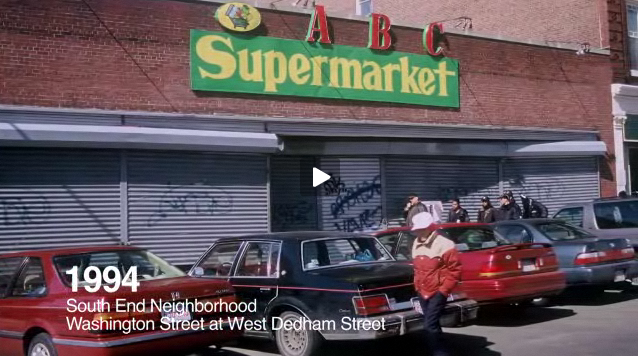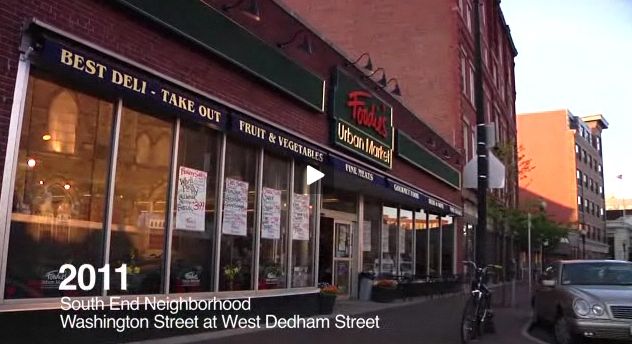Wow. That was great. Very well done and informative. That map 2 minutes in, of areas of Boston with populations that are 50% or more black, is really striking. And compare that map to this one here of half-mile radii from rapid transit stations:
http://www.somervillestep.org/files/map_Tservice.jpg
Someone unfamiliar with the system and its history might conclude that the T was
designed to avoid neighborhoods with high percentages of minorities. Of course that's not what happened, but you could see how one might think that.
To be fair, the map from Somerville Transportation Equity Project does not take into account the fact that all services are not created equal. For instance, it'll take about 25 minutes according to Google to go the 3 miles from Packard's Corner to Downtown on the B line, while it'll take half that time to go an equivalent 3 miles from Harvard Square.
But still, you look at those maps, and you see the primarily upper-middle class, predominantly white Brookline inundated with rail transit, and you see a complete rail no-man's-land between the Orange and Red Lines in predominantly black, less affluent Roxbury.
This map here:
http://www.thetransportpolitic.com/wp-content/uploads/2009/05/picture-1.png further illustrates the above point. Coincidentally, there happens to be a relatively lightly used, double tracked ROW going right through this no-man's-land. But the Fairmount Line is a long way from being an Indigo Line.
Anyway, off of my soapbox and back to interesting things from the film. It was interesting catching glimpses of the bus alternatives that were considered for replacing the El. For those who are interested (like me), a draft version of that document can be viewed here:
http://openlibrary.org/books/OL24638530M/State_transportation_projects_(Washington_street)_draft
Also interesting to hear that the Silver Line Waterfront operates at a cost of more than $9 per passenger. Correct me if I'm wrong, but wasn't the Night Owl service suspended for having equivalent costs in the $7 range?
One thing I didn't like was the implied characterization of the Silver Line Waterfront's customer base as being white residents of South Boston. As I understand (which I will gladly grant is not well) the immediately served area, it is primarily a would-be business area that is looking to be developed. And, as I understand it, that development is not quite happening.
In fact, if I recall correctly, SL3 to City Point (which would, as I understand it, be a more residential area) was canceled due to low ridership. I would imagine that people preferred the 7 bus which took them more directly into the core of Downtown? Does that jive with other people's understanding of what happened?
I like how he dwells on how much the El was disliked, though I wish he somehow could have noted that new elevated rail structures these days are nothing like the old Washington Street El. (Which would make sense, since that El was built 100 years ago now.) But since it doesn't sound like anyone in the community is pushing for a new El, I can see how that sort of content would have been seen as irrelevant.
And Matthew, I totally agree with your point about parking spaces. Given the other kinds of sacrifices we ask members of our society to make, a few parking spaces seems a bit insignificant.
BostonUrbEx, where did you find this/how did you hear about it? Thank you for posting it here; really enjoyed watching it!
